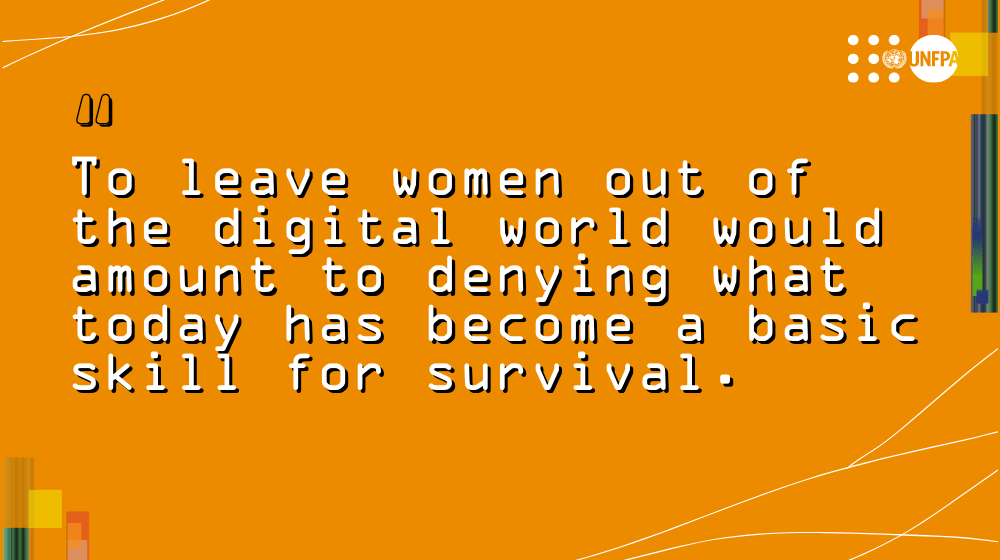Savita Dakle did not expect to be a farmer. Nor did she expect to use a smartphone to run social media groups with one million women farmers as members. Born to poor parents, married off early and working as an unskilled worker, Savita learned about farming practices on the job. Her life changed when she started using a smartphone given by her father to connect with people on social media platforms. She created two social media groups, attracted a million women farmers who learn from each other’s experiences, and has never looked back since. Savita’s story demonstrates the power of digital access, particularly to empower women and girls.
Digital disparity: According to a Unicef report, as many as 90% of the jobs in the world today have a digital component. These jobs, however, are available only to the digitally able, and to more men than women. According to the report, in developing countries, only 41% of women have access to the internet compared with 53% of men. Women are 20% less likely to own a smartphone and are more likely to borrow phones from a male family member. The report also says that boys are 1.5 times more likely to own a mobile phone, and 1.8 times more likely to own a smartphone than girls. Another report by the Organisation for Economic Cooperation and Development revealed that the gender gap in internet use is widening. Software development remains a male-dominated field, with women comprising only 15% of software designers. Data on the use of the internet in India indicates that in comparison with 58% male internet users, female users are only 42% (ICUBE 2020). Data for first-time users of the internet shows a starker contrast between men who have ever used the internet at 57.1% compared with women at 33.3%.
Girls and women are denied access to digital technologies because they almost always come second in a patriarchal social order. Data on literacy, education, and access to resources confirm the reality of their being second to men. The internet is seen as a ‘risk to the traditional social order’ and ‘male gatekeepers’ restrict or control girls’ and women’s access to the internet.
The post-pandemic world: Covid has demonstrated the seminal importance of digital tools in today’s world. As schools and offices shut down, the first jobs to be lost were the on-site and labour-oriented ones. Children struggled to keep up with their studies using the limited smartphones and computers available to them. Unesco estimated that around 168 million girls enrolled in pre-primary to tertiary levels of education were affected. While gender-disaggregated data is hard to come by, it is possible that within some families, boys had more access to scarce digital resources. It would be naïve to believe that a similar scenario will not visit the world again. To leave women out of the digital world would amount to denying what today has become a basic skill for survival.
Realizing ‘her’ potential: India aims to have a $1 trillion digital economy by 2025. Already, 40% of global digital transactions take place in India. In 2022, a staggering 49 billion digital transactions took place in India. As economies digitize further, there is every reason to believe that most jobs will require some knowledge of digital technology. In India, front-line workers are using tablets and smartphones, filling out online forms which feed directly into management information systems (MIS) while public schemes such as the PM Janani Suraksha Yojana require beneficiaries to provide their bank account details. Social and financial inclusion will necessitate digital inclusion.
There are vast opportunities for girls and women to power India’s digital economy and benefit from it. We have the world’s largest young population, and women and girls constitute almost half of it. Access to digital technology for a young woman can be a game changer with multiplier effects. Young women known as ‘Digital Sakhis’ from Madhya Pradesh are upturning discriminatory social norms through the use of smartphones. Their efforts give us hope that digitally empowered women will lead this transformation in India.
Leveraging India’s demographic dividend requires an equal emphasis on the country’s gender dividend. Educated, economically productive, empowered and socially aware women and girls are highly valued in any society. A rapid digital transformation is already taking place. Bridging the gender gap will require smart interventions specially designed for girls and women in health, education, employment, banking, skilling and transportation.
In the current context, digital literacy for women is a necessity if India wants to achieve the ultimate goal of gender equality. Prime Minister Narendra Modi emphasized the need for ‘women-led development’ as India took over the G20 presidency. Women20—the G20’s official engagement platform to promote gender equity—identifies “bridging the gender digital divide" as one of its five priorities that need to be mainstreamed as part of the G20 agenda this year.
A favourable policy environment to promote the digital empowerment of women is a step in the right direction. This Women’s Day, let’s pledge to keep the momentum going and support diversity and equality in digital spaces.
Poonam Muttreja & Andrea Wojnar are, respectively, Executive Director of Population Foundation of India, and India Representative and Country Director, Bhutan, United Nations Population Fund, part of Team UN India
Originally published in Mint


